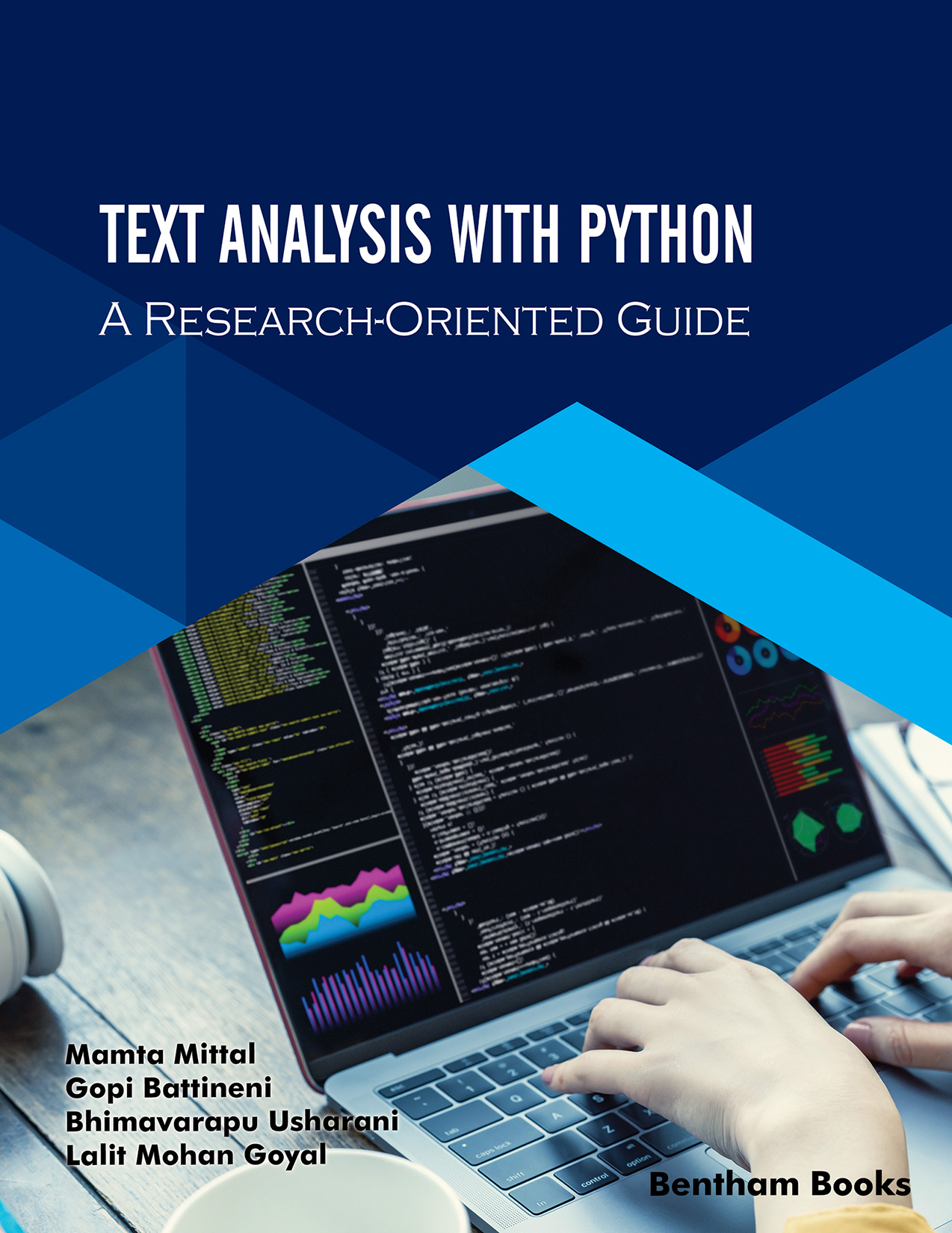The book focused on the latest research in the field of text mining using python code. The main objective of the book is to apply various machine learning and deep learning techniques to textual data. Natural language processing and fuzzy rule generation are also discussed in detail along with a basic introduction to python, data handing and shaping. Various data sets are used to show various techniques of text mining in the different research domains. This book is beneficial for the audience who want to work in the field related to text mining. In the book, the authors have presented the content of the book in simple and understandable manner to the reader by using the step-by-step implementation of different algorithms. This book will teach text mining concepts from scratch which is organized in eight chapters.
Chapter 1 covers the basics and preliminaries of natural language processing. This chapter gives the basic idea about text mining workflow, information retrieval and extraction.
Chapter 2 provides a brief introduction to the python programming language. This chapter focuses on the core Python language and important libraries to do the natural language processing by using the different IDEs like Anaconda and Google Co laboratory.
Chapter 3 discusses the data analysis concentrating on data loading and pre-processing concepts of text mining using the python language, learning about importing some predefined Python libraries and visualization techniques using the python various modules.
Chapter 4 discusses the basics of text mining and writing the python programs by using the NLP open-source libraries. The chapter also discusses different text mining techniques like pre-processing, feature selection, feature extraction, text summarization with detailed examples.
Chapter 5 presents details about text classification and text prediction techniques. In this chapter, we have given the real movie review dataset and discussed four classifiers namely naive Bayes, random forest, k-nearest neighbour, and support vector machine in detail.
Chapter 6 presents the details about how to conduct text clustering in python by unsupervised machine learning techniques. To explain this, we adopted the IRIS dataset which is famous in UCI Machine learning Repository and well presented with python script.
Chapter 7 discusses fuzzy logic, different membership functions, their applications, challenges and how to implement different text mining concepts like pre-processing, feature extraction, clustering, association rules, and classification using the fuzzy membership functions and fuzzy rules.
Chapter 8 provides details about deep learning in text mining using python. In this chapter, the basics of deep learning, different activation functions, their applications, challenges and how to write the python program using deep learning have been presented and explained clearly.
CONSENT FOR PUBLICATION
Not applicable.
CONFLICT OF INTEREST
The author declares no conflict of interest, financial or otherwise.
ACKNOWLEDGEMENT
Declared none.
Mamta Mittal
Delhi Skill & Entrepreneurship University,
New Delhi, India
Gopi Battineni
University of Camerino,
Camerino,
Italy
Ms Bhimavarapu Usharani
Department of CSE,
Koneru Lakshmaiah Education
Foundation at Vaddeswaram,
Andhra Pradesh, India
&
Lalit Mohan Goyal
Department of Computer Engineering,
J.C. Bose University of Science
& Technology,
YMCA Faridabad (Hr.), India

